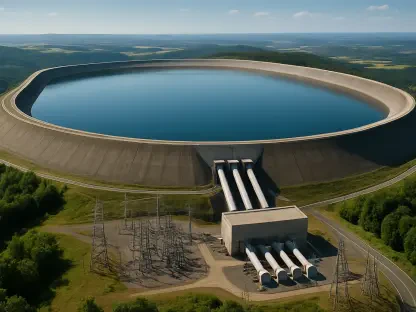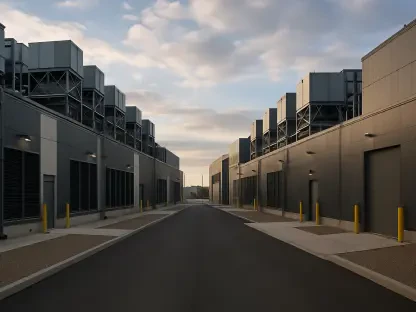With the global push toward cleaner and more sustainable energy sources intensifying, the potential role of small modular reactors (SMRs) has become a focal point in discussions about nuclear energy’s future. Traditional nuclear reactors have long been criticized for their massive costs and lengthy construction times, often plagued by delays. In contrast, SMRs offer a different approach. These compact nuclear plants, with outputs ranging from 1MW to 300MW compared to the more typical 1,000MW of their larger counterparts, promise enhanced flexibility and adaptability to various energy needs. Unlike traditional reactors, SMRs can be partially or fully assembled in factories, which not only lowers costs but also allows for quicker deployment. These benefits have positioned SMRs as a crucial component in innovating nuclear energy solutions, potentially overcoming many of the issues traditional large reactors face.
Advantages of Small Modular Reactors
The appeal of SMRs lies primarily in their versatility and potential cost-effectiveness. Unlike the monolithic designs of traditional nuclear reactors, SMRs are designed to be modular, allowing for a range of configurations that can be tailored to fit specific requirements. This modularity translates into significant advantages over conventional reactors. For example, the ability to scale SMR deployments according to actual demand rather than anticipating large-scale energy needs provides both economic and strategic benefits. Furthermore, factory assembly reduces the complexity and costs associated with on-site construction. As a result, SMRs offer greater predictability in their deployment, leading to more efficient project timelines and budgets, thereby attracting interest from both government and private sectors.
Regulatory challenges, a significant hurdle for all nuclear projects, are particularly pertinent for SMRs, which push the boundaries of existing frameworks. The Nuclear Regulatory Commission (NRC), responsible for overseeing the safety and licensing of nuclear reactors in the United States, has a reputation for being slow and unpredictable. This sluggishness can stall the implementation of innovative energy solutions, making it challenging for SMRs to gain the traction they need. Beyond the NRC, local reviews under the National Environmental Policy Act pose additional layers of scrutiny that can further delay projects. Addressing these regulatory challenges is essential, as reforming and streamlining these processes could accelerate the deployment of SMRs, paving the way for their wider acceptance and integration into national energy strategies.
Challenges and Risks Facing SMRs
Despite the clear advantages, SMRs are not without their own set of risks and challenges. Technological risks involve uncertainties about the viability of emerging reactor designs and the potential discovery of more efficient energy sources. The rapid pace of technological advancement means that innovations in the energy sector could quickly render current designs obsolete, a risk that can deter investment. Market risks add another layer, with energy demand being notoriously difficult to predict. Nuclear energy’s cost-effectiveness could be challenged by fluctuations in market conditions, impacting the financial feasibility of SMR projects.
Political and regulatory risks highlight the need for cohesive and bipartisan support. The extended timelines typical of nuclear projects mean consistent government backing is crucial for success. Bipartisan agreement ensures continuity across political administrations, crucial for long-term initiatives like SMR deployment. Political uncertainty can endanger funding and policy support, further complicating the path for SMR adoption. These challenges emphasize the necessity for a concerted effort by policymakers to create favorable conditions for SMRs while addressing the strenuous regulatory landscape. Even with these hurdles, the prospect of establishing a strategic industry around SMRs, with ripple effects across supply chains, remains an enticing possibility.
Strategic Industry Implications
The potential emergence of SMRs as a transformative energy solution extends beyond immediate energy concerns. Establishing a robust SMR industry in the United States could yield significant economic and strategic benefits. The upstream and downstream impacts could stimulate innovation, create jobs, and build expertise in an industry poised to become globally relevant. There is already mounting interest from sectors such as data centers, which demand consistent and reliable energy supplies that SMRs are well-positioned to provide. Countries like China and Russia are aggressively advancing their SMR capabilities, seeking to dominate this promising market. If the United States wishes to remain competitive, it is essential to recognize the strategic value SMRs could represent on an international scale.
The protracted development cycle of nuclear technologies, incorporating stages of research, development, deployment, and scale-up, is notably challenging for SMRs. A critical gap often referred to as the “valley of death” exists during the development phase when funding tends to diminish just before significant deployment opportunities arise. Filling this gap requires government intervention and robust support systems to ensure continuity across the SMR development process. Organizations like the Office of Clean Energy Demonstrations and the Loan Programs Office are tasked with providing this much-needed support, yet calls for a more coordinated approach persist. A comprehensive strategy led by the Department of Energy, in collaboration with various federal entities, is seen as vital for leveraging SMRs and integrating them effectively into the nation’s energy landscape.
Future Perspectives for SMRs
Small Modular Reactors (SMRs) capture interest mainly due to their flexibility and potential cost savings. Unlike the bulky designs of traditional nuclear reactors, SMRs are modular, allowing customization for specific needs. This setup offers notable advantages over conventional reactors, such as scaling deployments to meet actual demand, not inflated predictions, which brings both economic and strategic benefits. Additionally, factory assembly reduces complexities and expenses tied to on-site construction. Thus, SMRs enable more predictable deployment timelines and budgets, drawing attention from governments and private sectors alike.
However, SMRs face significant regulatory challenges. These reactors challenge established frameworks, particularly the Nuclear Regulatory Commission (NRC), known for its slow and unpredictable procedures. This sluggishness complicates the adoption of innovative energy solutions. Local reviews governed by the National Environmental Policy Act add scrutiny, causing further delays. Addressing these hurdles through reform and streamlining could speed up SMR deployment, aiding their integration into broader energy strategies.









